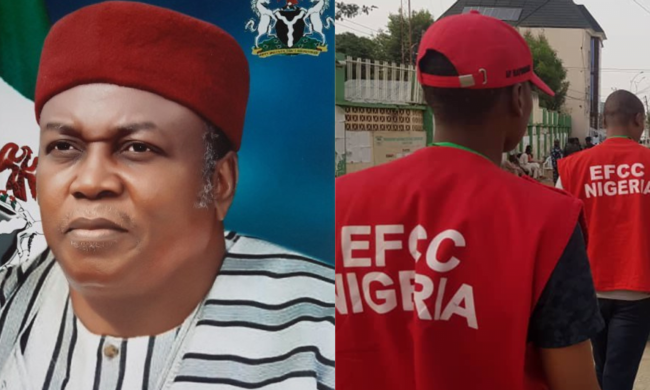
The Economic and Financial Crimes Commission (EFCC) has apprehended Darius Ishaku, the former governor of Taraba State, due to accusations of fraud totaling N27 billion.
Insider reports from the agency indicate that Ishaku was taken into custody on Friday, and by Friday evening, he was still being held for questioning. Sources have revealed that at least 15 charges have been brought against him, and he is expected to face a court hearing once the evidence is fully assembled.
Darius Ishaku, affiliated with the Peoples Democratic Party, served as Taraba State’s governor from May 2015 until May 2023. This recent arrest follows previous scrutiny of his administration; in May 2021, the EFCC detained three officials from his government related to a N21 billion fraud scheme.
Those detained included a permanent secretary, a Director of Finance and Account, and a cashier from the Ministry of Local Government and Chieftaincy Affairs. Investigations suggest that substantial sums of allegedly misappropriated public funds were withdrawn from state accounts through cheques, with each transaction reportedly exceeding N10 million.
For ongoing updates, join our WhatsApp channel: WhatsApp Channel